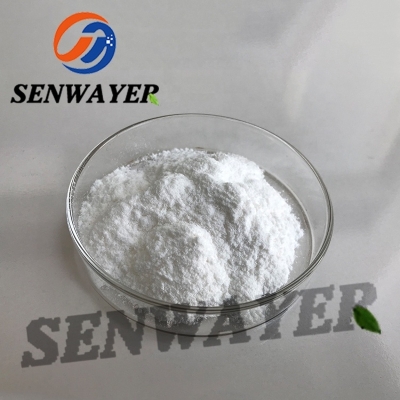-
Categories
-
Pharmaceutical Intermediates
-
Active Pharmaceutical Ingredients
-
Food Additives
- Industrial Coatings
- Agrochemicals
- Dyes and Pigments
- Surfactant
- Flavors and Fragrances
- Chemical Reagents
- Catalyst and Auxiliary
- Natural Products
- Inorganic Chemistry
-
Organic Chemistry
-
Biochemical Engineering
- Analytical Chemistry
- Cosmetic Ingredient
-
Pharmaceutical Intermediates
Promotion
ECHEMI Mall
Wholesale
Weekly Price
Exhibition
News
-
Trade Service
In 2022, it is an unavoidable fact that the innovative drug industry as a whole will be cold, no matter how hard the industry hides it
.
In the eyes of industry insiders, this round of transition from hot to cold appears vaguely at two time points
.
One is the implementation of centralized procurement in 2018, and the other is that Hengrui's revenue growth rate will turn negative in 2021
In 2018, the National Medical Insurance Bureau promoted the centralized procurement of drugs, and the price of generic drugs was reduced by 70% into the catalog or lost the entire market.
This "administrative + market" fee control method made the entire industry realize the strictness of fee control under the reform of the payment side.
.
In a big way, industry insiders believe that if mature drugs can do this, innovative drugs naturally cannot escape
Previously, a group of biotech executives who were the first to return to China to start their own businesses generally expected the “low price” of domestic innovative drugs to be “dollars for RMB”—that is, similar new drugs, the domestic price is about one-seventh of that in the United States
.
However, the immediate medical insurance negotiation impacted the industry's cognition: not from the original 100,000 US dollars to 100,000 yuan , but the "heavyweight new drugs" such as PD-1, which had high hopes in China, after entering the medical insurance negotiation , the price is only tens of thousands of RMB - one-twentieth of the United States
Not from the original 100,000 US dollars to 100,000 yuan - one-twentieth of the United States
The essence of medical insurance negotiation and volume procurement is the same.
Both use “price drop” to exchange “drug availability”, but what impact this exchange will have on innovative drugs, the industry has been waiting for the results
.
When the three-quarter results of Hengrui in 2021 are released one after another, "the increase in the volume of PD-1 after entering the medical insurance does not make up for the lack of price" has become the sentence that Hengrui explained the most to the outside world
This is still the case for companies in the first echelon of domestic sales capabilities.
For those biotechs that have not yet matured commercialization systems, the situation is not optimistic
.
For those biotechs that have not yet matured commercialization systems, the situation is not optimistic
.
Before 2018, people in the industry generally believed that the market in any three or five provinces and cities in China was enough to "feed" a biotech company; after 2021, all companies began to target overseas markets, as if 7 billion patients could barely support China.
innovative drug development
.
Behind this "exaggeration" is the anxiety and concern of the entire investment community and the industry about the unclear prospects for the commercialization of domestic innovative drugs
Also at the end of 2021, the medical media "Cai Jian Dao" published a speech by Bi Jingquan, the former director of the State Food and Drug Administration, which caused a phenomenon-level madness in the industry
.
The core of the "speech" is very simple: the research and development of new drugs needs to be supported by high returns
Relying on the fast follow strategy and capital and regulatory reforms, China's innovative drug industry has finally gained some solid industrial accumulation, but China needs to have its own FIC and BIC, and China's new drug industry needs to have the right to speak internationally
.
Although China cannot price as high as the United States, the commercialization of domestic innovative drugs does indeed need to usher in a breakthrough
- 01 -
- 01 -"Medical insurance payment price" put on the agenda
"Medical insurance payment price" put on the agenda Since the beginning of this year, the official websites of nearly 20 provincial and municipal medical insurance bureaus have posted notices to carry out the pilot work of medical insurance payment standards
.
The introduction of these policy pilots has not been paid attention to and interpreted by many people under the background of the difficulty in payment of innovative drugs and the cold financing of entrepreneurship and innovation enterprises
.
In fact, the actions of these provinces and cities are based on the "Notice of the Office of the National Medical Insurance Administration on Carrying out the Pilot Work of Medical Insurance Drug Payment Standards" that circulated in the industry in January this year.
Although this document has not yet been posted on the official website of the National Medical Insurance Administration, but Judging from the feedback from various provinces and cities, the document has been officially implemented nationwide since January 1 this year
.
The core content of the document is to determine a reasonable medical insurance payment price for a drug based on the current selling price and usage of the drug, and the Medical Insurance Bureau ignores the price of the drug itself; The price is paid, and the excess part is borne by the patient, or left to explore other guarantee mechanisms such as commercial insurance
.
Based on this, an expert draws an idealistic possibility: "The introduction of the standard price of medical insurance payment is a "compromise" found between the previous negotiation of the medical insurance catalog with a fixed reimbursement price, and the lack of medical insurance.
Depending on the state, medical care will take care of part, and the rest will depend on the free pricing of pharmaceutical companies
.
”"The introduction of the standard price paid by medical insurance is a kind of "compromise" state found between the previous negotiation of the medical insurance catalog with a fixed reimbursement price and not entering medical insurance.
Free pricing
.
"
It takes into account the two attributes of "basic medical insurance protection" and "enterprise independent pricing".
The core is to find a "market-oriented" premium space for the sales of drugs: to ensure that the products of pharmaceutical companies are not only covered by basic medical insurance, but also There is a certain profit elasticity
.
Some people point out that the ultimate goal of this policy is to explore a balance between the availability and return of innovative drugs
.
.
The core of the medical insurance payment system is that the pricing of innovative drugs is left to the market to decide, and medical insurance pays according to the financial capacity
.
But some experts said that even in Europe and the United States and other countries, the price of drugs will be limited
.
If we allow enterprises to set their own prices to pay for medical insurance, it will lead to higher out-of-pocket expenses for the common people and increase the burden on the common people
.
.
However, because it is still being explored, the current pilot work is all about varieties with a small market size and low therapeutic areas (all of which are minor diseases)
.
In the future, based on these "pilot products", we will expand step by step
.
On March 14, Shanghai launched the medical insurance payment standard pilot product (part) Source: Shanghai Medical Insurance Bureau
The current medical insurance payment price is unified with the common name, and the price is not listed according to the specific manufacturer.
That is to say, the medical insurance payment standard will follow the common name and has nothing to do with the specific manufacturer
.
In the future , drugs with different indications and different functional organizations may be included in the price paid by medical insurance
.
.
Different indications, different functional organizations
For example, the future medical insurance payment will be paid according to the generic name or even the indication, and the rest of the pricing will be determined by the company, and there will be a lot of room for innovative drugs by then
.
In fact, medical insurance payment standards are not a new concept
.
Previously, the Chinese pharmaceutical industry has been fighting the price war on drugs for 20 years, and all kinds of unexpected cost control methods have been studied
.
The pioneer of medical reform, Fujian, used the medical insurance payment standard to restrict the use of some drugs (mainly auxiliary drugs).
.
_
After the introduction of centralized procurement, the price of centralized procurement has also been linked to the price paid by medical insurance: for the same generic drug, medical insurance will pay according to its national centralized procurement price, and the remaining hospitals and patients will solve it by themselves
.
.
Nowadays, there are many ways to control fees, and the "price limit" attribute of medical insurance payment standards has gradually faded, and the "retained profit" attribute of giving drugs a certain profit space has begun to surface
.
In each medical insurance negotiation, the participating innovative pharmaceutical companies will have a dilemma.
Not enrolling in medical insurance will have a huge impact on the commercialization of drugs, and it is difficult for enterprises to accept the price reduction of medical insurance
.
Therefore, every time a "soul bargain", every quotation of a pharmaceutical company is difficult and uneasy
.
But now, once the medical insurance payment price system is introduced into the field of innovative drugs, the basic attributes of medical insurance will be explained, and patients will be more sensitive to the part of "exceeding the medical insurance payment price", because there is no medical insurance's mandatory market transaction price.
Part of the price will return to the most basic market competition - whoever has good quality, who has a good brand, and who can set a high price
.
.
Since then, it is no longer a life-or-death choice for innovative pharmaceutical companies to face medical insurance negotiations
.
This may be a process of partial return of innovative drugs to the market
.
- 02 -
- 02 -Innovative drug regulatory reform ideas
Innovative drug regulatory reform ideas In fact, there is a very direct basis to characterize whether an industry belongs to the bubble period: whether everyone in this industry is starting a business
.
In 2015, after the first batch of returnee biotech talents returned to China to start a business, the positive reform of the regulatory layer was ushered in, which suddenly set off the east wind of the innovative drug industry
.
As a result, senior executives of domestic and foreign pharmaceutical companies have made high-profile appearances, saving one after another, and using the power of capital to start businesses
.
These senior "workers" who originally belonged to the C prefix (chief XX officer) of various companies have now become "entrepreneurs"
.
But in fact, running a company is not just about a few abilities, it requires all-round comprehensive qualities such as technology, management, operation , etc.
How many CEOs who have "successful entrepreneurship" are their own abilities and how many are dividends bestowed by the times, which will be verified one by one after the industry declines
.
.
Although the clinical failure rate of innovative drugs in China is close to zero, innovative drugs themselves are still a "nine-death" industry
.
Not everyone who jumps in will be successful
.
The innovation of biotechnology is a point-like innovation, and there is no experience to follow.
Therefore, in the matter of "innovation", large enterprises do not have much advantage
.
A large number of small and sophisticated companies seek new mechanisms and methods, implement them into therapies, and then use them to clinically verify them.
In the end, they are either acquired by large companies or successfully commercialized, creating a new biopharma
.
The essential operation logic of this industry is a lot of trial and error
.
.
Therefore, the idea of innovative drug supervision is to first improve the definition of "innovative standards"
.
Last year's CDE's "Principles of Clinical Value-Oriented Oncology Drug Development" and the FDA's Cinda ODAC meeting recently pointed to the same thing: if your molecular entity has nothing innovative, it doesn't matter if you are doing clinical trials The old treatment methods, even compared with placebo, where is your "innovation"?
The improvement of innovation standards has put forward higher requirements for pharmaceutical companies to initiate projects, but at the same time, supervision is also reducing the cost of "trial and error of innovative drugs"
.
A new drug is proposed from an idea, followed by the verification process.
How to shorten the verification process is something that both industry and supervision need to do
.
The rise of the CRO industry is part of the efforts of CDE to accelerate clinical approval
.
During this period, CDE will list several guidelines for clinical review of new drugs on the Internet every Friday.
In a sense, it is also SOP for drug approval to reduce communication between pharmaceutical companies and unnecessary operating costs
.
In a sense, it is also SOP for drug approval to reduce communication between pharmaceutical companies and unnecessary operating costs
.
The final step is the issue of "return on innovative drugs"
.
After raising the standard, innovative drugs need to spend more money, and the research and development cycle will be longer.
The cost of trial and error needs to be paid by someone.
This kind of money, whether it is for big pharmaceutical companies or biotech, can only be borrowed from the future.
A good expectation for the return of innovative drugs is required
.
Expectations come from the present, and what the medical insurance payment price needs to solve is the current low return on innovative drugs, the “cost” of innovative drug trial and error, medical insurance funds and patients each share a portion
.
Back to the pricing of innovative drugs, there is no generally accepted standard for how "new" innovative drugs made in China are
.
The health economics theory accumulated in the medical insurance negotiation in the past two years has given the whole society a basis for the value of new drugs
.
In the past two days, the National Health and Medical Commission announced the establishment of a national pharmaceutical committee, which to some extent contributed to the construction of this "standard"
.
.
Although the Medical Insurance Bureau, the Food and Drug Administration, and the Health and Health Commission belong to different functional departments, as the industry matures, the linkage between the three doctors will become more frequent, and the pricing of innovative drugs will usher in a return of value
.
Therefore, in the future, drugs with 90 points can get 90 points of pricing, and drugs with 60 points can only get 60 points of pricing
.
However, it is worth noting that now the various rules of CDE are more clear, and the standards are increasingly in line with overseas.
Therefore, drugs with 59 points will not be sold in hospitals at the usual price of 59 points, and they may be eliminated directly
.
- 03 -
- 03 -"There is no medicine to buy" VS "no medicine is available"
"There is no medicine to buy" VS "no medicine is available" China's population is aging severely, and the income and expenditure of medical insurance funds is under pressure
.
Regarding the availability of medicines and the effective use of medical insurance funds, the policy design department has been making a balance between various efforts and different demands
.
Not long ago, a topic about "Do you want free medical care" suddenly became popular
.
The reason is that a topic about "whether private medical care should be profitable" was mentioned to the relevant departments for discussion.
The spread of the news once caused shocks in the capital market, and the stock prices of private hospitals in the entire A+H sector were affected
.
After the explanation of the relevant listed company, it was learned that it was an "Oolong one" - just a routine discussion, not a policy formulation
.
Completely free, obviously impossible
.
Innovation requires policies to allow companies to make large-scale investments and see future profits
.
The medical insurance payment price is a more refined management method found between the "one-size-fits-all" medical insurance haggling and "non-coverage"
.
In the future, between encouraging innovation and protecting people's livelihood, more such "refined" operation methods will be needed
.
Blindly one-size-fits-all price cuts will eventually only bring about a new round of "no medicine available" for the Chinese people, and its price is much higher than "the medicine cannot be bought" and "the medical insurance fund is under pressure"
.
.







